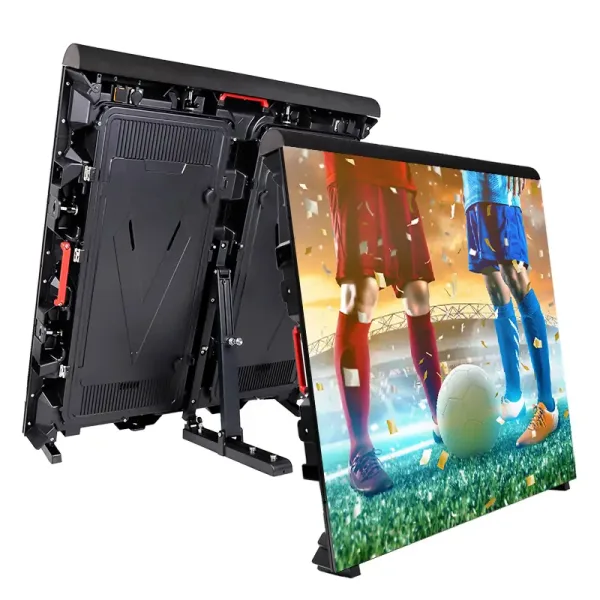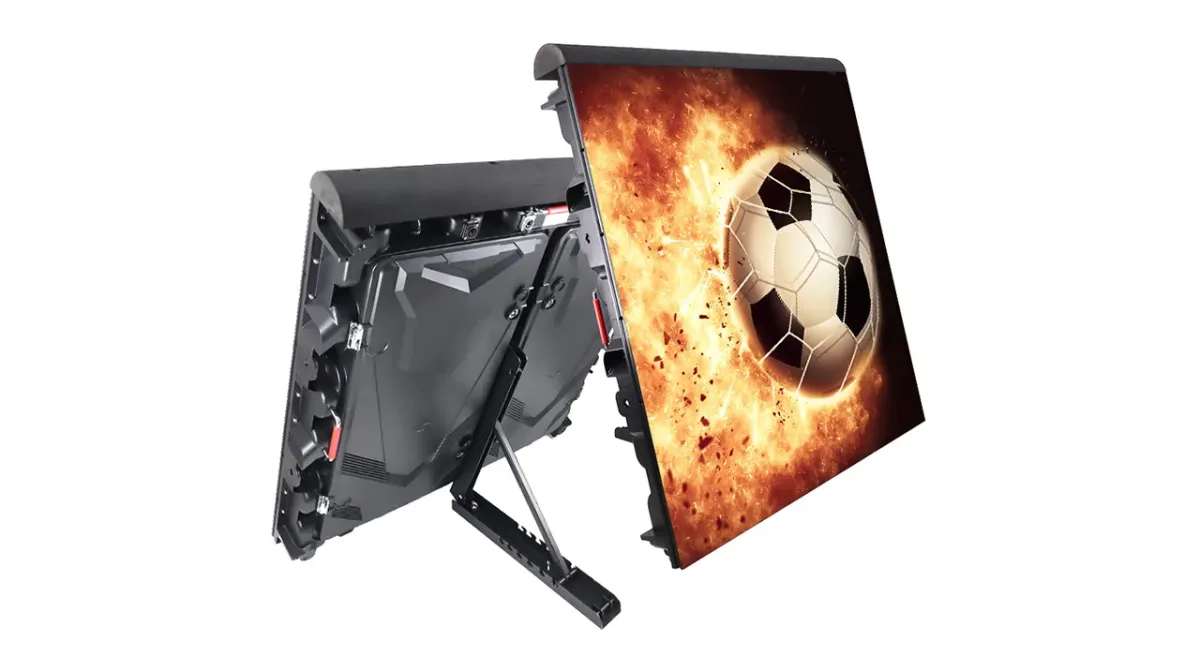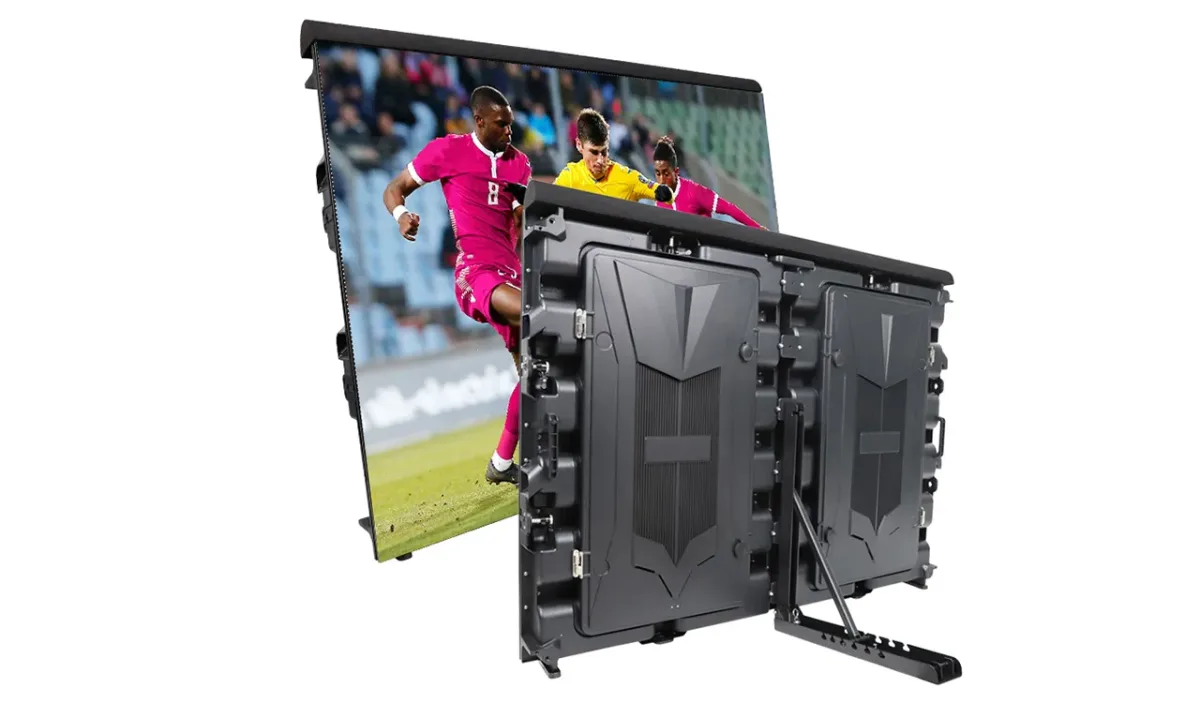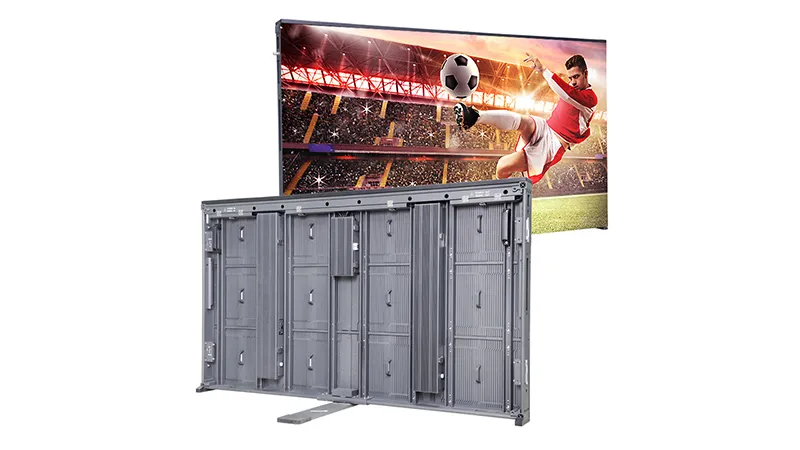Sports LED Display Recommendation
Sport LED screen is an electronic screen or panel installed in stadiums, and arenas to provide visual content and information to spectators.
2024 New LED Screen Price for You
The Main Types of Stadium LED Screen
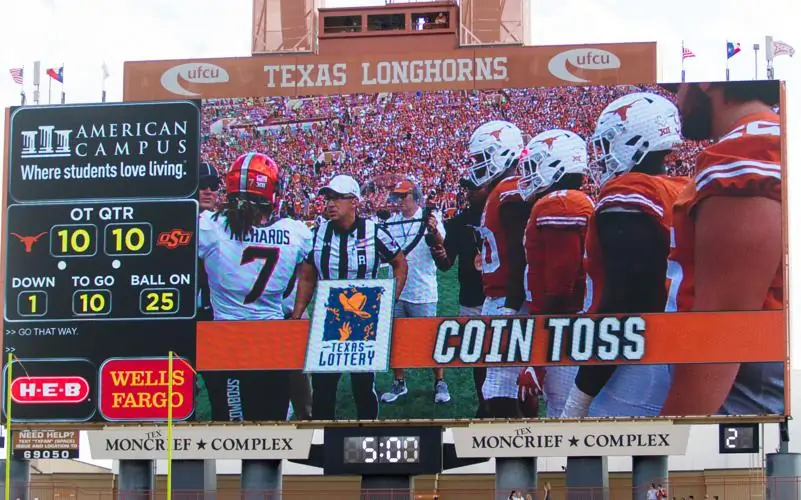
LED Scoreboard for Sports
The main function of LED scoreboard for sports is to display and record sports game time and scores. It is consist of timing system and scoring system.
The electronic LED video scoreboard for sports is a powerful and versatile tool to enhance visualization and communication at a variety of events and environments.
LED Ribbon Board
LED ribbon panels consist of thin, flexible strips or ribbon panels with embedded LED lights.LED ribbon panels are known for their flexibility and vivid, dynamic visual effects. They can display text, graphics, animations and even video content and are mainly used in stadiums and sports grounds.
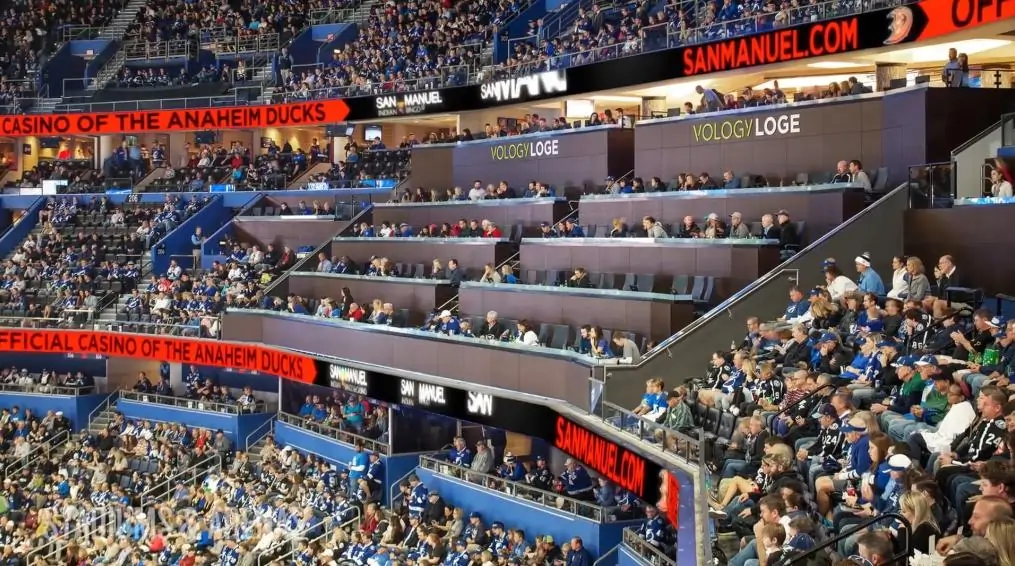
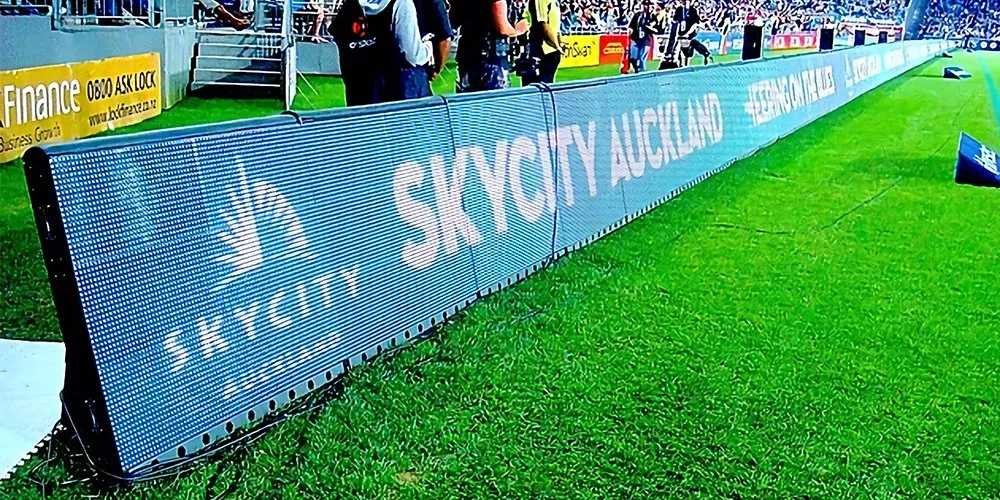
Stadium Perimeter LED Display
Stadium perimeter LED display screen is generally located in the stadium stands or the periphery of the football field, with the exciting moment recording, commercial advertising display, highlights playback and other functions, so that the audience immersed in the sporting events.
Centre-Mounted LED Display
Located in the centre of the stadium, the center-hung LED display with lift adjustment (vertical movement) can meet the needs of the game, performance, etc., and is regarded by the industry as an example of the application of LED bucket screen. It can also be divided into different areas to display various statistics, charts, animations or live broadcasts.
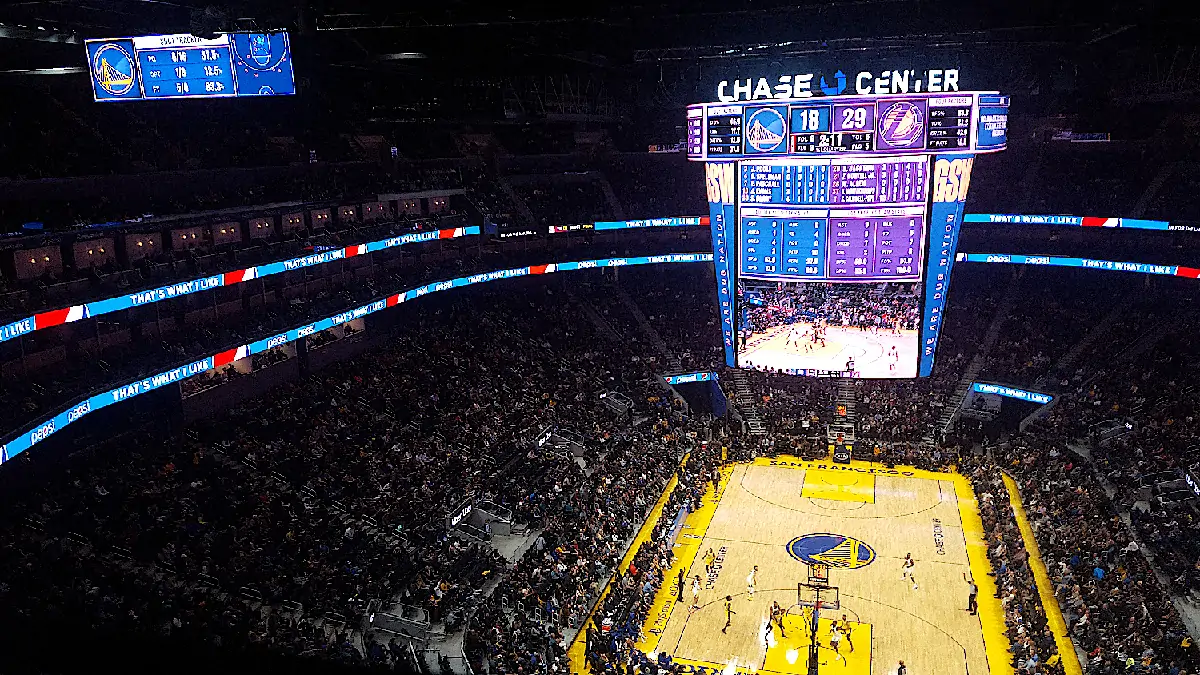
EagerLED Sports LED Display Video
Why Choose Us
2024 New LED Screen Price for You
Stadium LED Screen Guidance: Prices, Advantages, Selection All Here
Stadium LED Screen Guidance: Prices, Advantages, Selection All Here
Stadium LED screen is changing the way fans experience live sporting events, adding excitement through crystal-clear displays, real-time replays and immersive advertising. To help you maximize fan engagement and advertising revenue, we’ve taken an in-depth look at the essential prices, highlights, selection and reliable stadium LED display suppliers for a successful investment.
Table of Contents
1. What is A Stadium Screen?
A stadium LED display refers to large, high-resolution LED screens installed in sports stadiums. They are designed to improve the visual experience for both live spectators and broadcast audiences, providing dynamic content that includes game-related information, highlights replays, advertisements, fan interaction and other visual content.
The most important function of stadium LED screens is delivering real-time game information to audiences. Meanwhile, considering the outdoor environment elements, the stadium screens feature superior brightness, high contrast rate, and high waterproof level, providing audiences with high-definition and high-clarity images in various outdoor conditions. It is beneficial for sports game development and stadium advertisements.
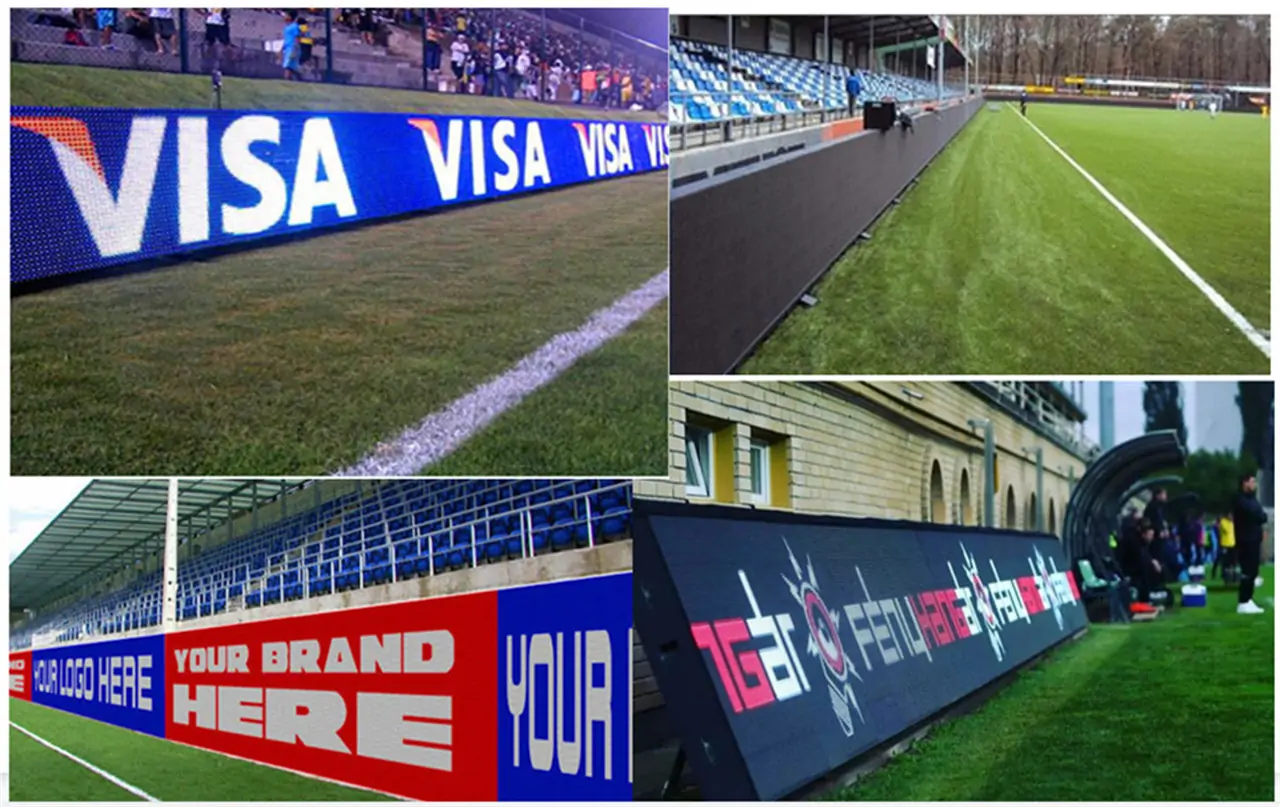
2. Common Features of Stadium Screens
In 2024, stadium LED screens will be designed to meet the demands of high-impact environments ranging from intense sunlight to uninterrupted viewing in expansive arenas. Here are some of the key features of today’s stadium screens:
2.1 Reliable Safety Design
Each LED bead is designed with soft masks to effectively avoid scratches and collisions. In addition, the top of stadium screens is wrapped with pillowcases that can protect not only the LED perimeter board, but also the athletes or spectators who accidentally hit the display.
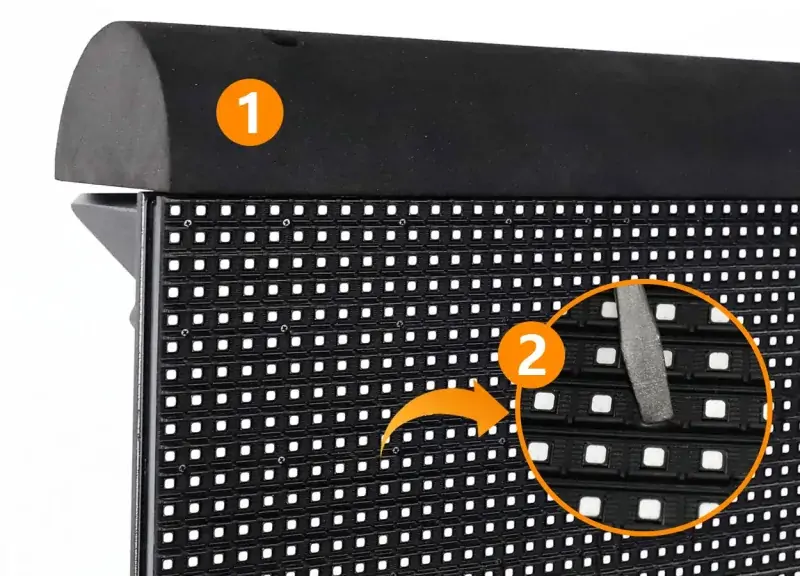
2.2 0-90°Adjustable Bracket
To maximize visibility, most stadium LED displays are equipped with a 0-90°adjustable bracket, which provides 140°-160° viewing angles both horizontally and vertically, so spectators in all areas of the stadium have an excellent view.
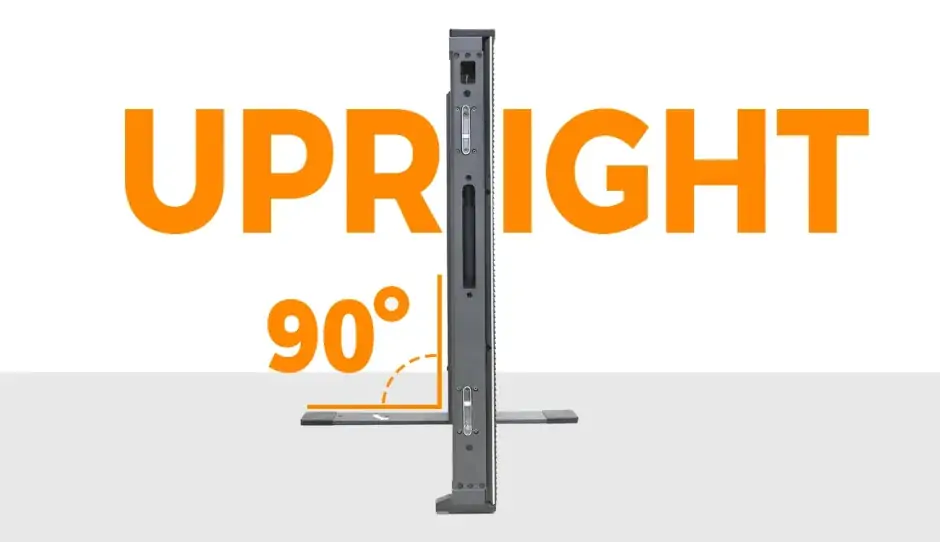
2.3 Multiple Installation Methods
If a boom is installed, you can also use the LED enclosure for suspension mounting. By removing the pillowcase and vertical structure, you can use the LED display cabinet for outdoor stadium LED billboards. This allows it to be used in a variety of installations and applications.
2.4 Higher Waterproof Level
Outdoor stadium displays are built to last, with IP65 or higher weatherproof ratings that protect against rain, dust and extreme temperatures, so they perform well even in harsh conditions.
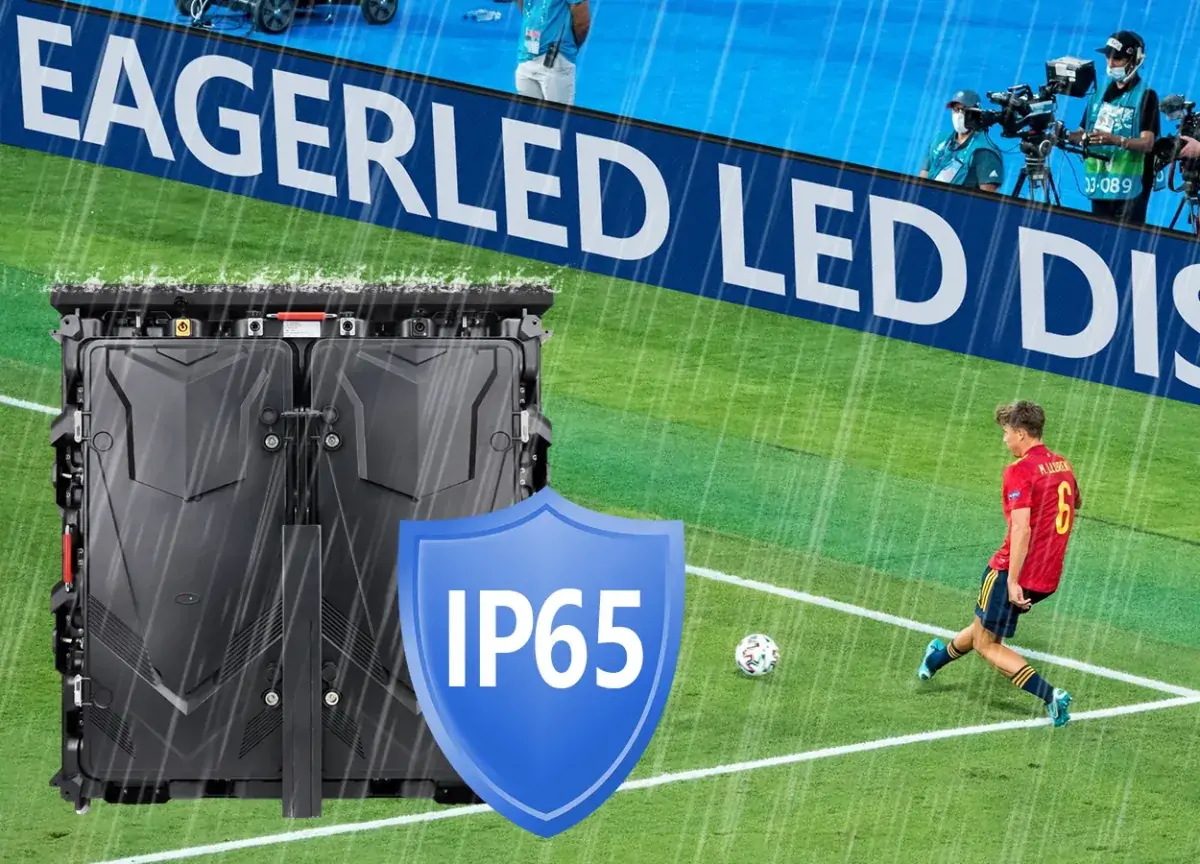
2.5 Superior Brightness and Resolution
To handle direct sunlight and ensure visibility from all angles, sports LED displays offer high brightness levels, typically ranging from 5,000 to 8,000 nits. Pairing them with high-resolution displays provides crisp, vivid visuals that bring every detail to life.
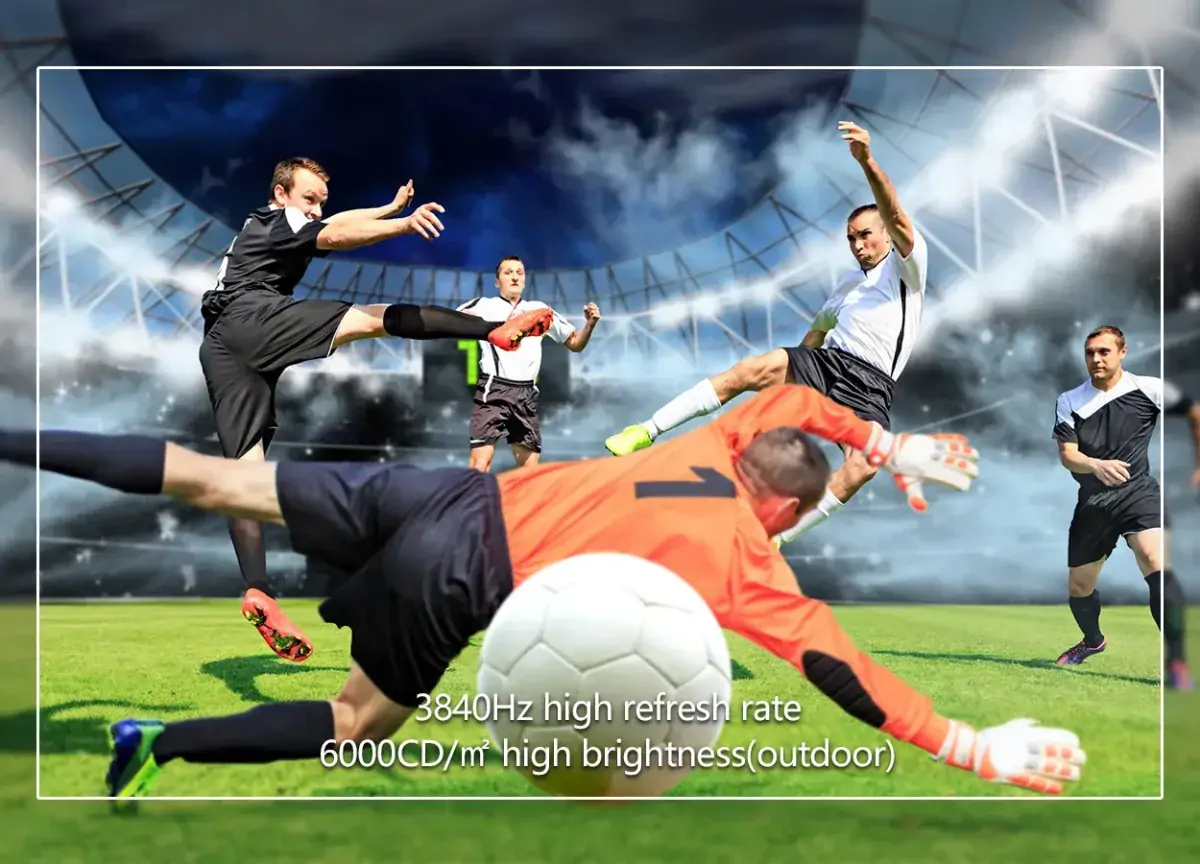
3. 4 Key Parameters of Outdoor Stadium Screens
If you are considering an outdoor stadium screen, there are several key parameters you should consider to ensure optimal display performance. Below are the key parameters.
3.1 Viewing Angle
In large stadiums, audiences in different positions have various visual angles. Therefore, viewing angles(typically 160°horizontally and vertically) ensure that the sports LED display can be seen clearly from all areas of the stadium.
3.2 IP Rating
Outdoor sports LED displays must be weatherproof, IP65, IP66 or higher ratings ensure that they are waterproof and dust-proof for harsh environmental conditions such as rain, snow, and extreme temperatures.
3.3 Brightness
High brightness is essential for outdoor stadium screens to ensure visibility in direct sunlight. Brightness levels for outdoor stadium LED screens are typically 5,000 to 8,000 nits or more, depending on the environment. You should notice that excessive brightness will greatly shorten the lifespan of sports LED displays.
3.4 Pixel Pitch
Pixel pitch is the distance between each pixel on a display, usually measured in millimeters. Smaller pixel pitches (e.g. P4, P5) provide higher resolution and sharper images. For large stadiums where spectators are further away from the perimeter LED display, a larger pixel pitch (e.g. P8, P10) may be sufficient.
4. Why Stadium Needs LED Displays?
Nowadays, stadiums increasingly rely on LED screens to enhance audience engagement, facilitate communication, and elevate the overall atmosphere of events.
4.1 Enhanced Audience Engagement
Live Updates and Replays: Stadium LED screens allow stadiums to display live game action, instant replays, and key moments such as touchdowns, field goals, or home runs. This keeps audiences engaged even when they can’t clearly see the action on the field.
Interactive Content: Interactive features such as crowd games, voting systems and social media messages can be displayed on the stadium screen, encouraging audiences participation and creating a more engaging atmosphere.
4.2 Improved Visibility and Accessibility
High Visibility: Sports LED displays ensure that fans away from the action can still follow the game, and watch replays and adverts, making the stadium experience more enjoyable for all spectators, no matter where they are.
Improved Accessibility: Stadium LED screens can display captions or sign language interpreters, making it easier for people with hearing impairments to attend events.
4.3 Enhancing Entertainment Value
These stadium LED displays offer a captivating visual experience with their engaging visual content. High-resolution sports LED displays ensure that every detail can be seen clearly and vividly, enhancing entertainment value for any sporting event, concert or live performance.
4.4 Safety and Emergency Alerts
Emergency Messages: In the event of an emergency, stadium LED displays can broadcast important safety information, evacuation procedures or real-time updates to ensure the safety and well-being of your audience.
Weather Updates: For outdoor events, the stadium screens can be used to display real-time weather updates, including rainfall delays, temperature or severe weather warnings.
4.5 Potential Business Opportunity
Perimeter LED displays provide a highly effective platform for advertising, whether for sponsors, in-stadium promotions, or local businesses. The vibrant colors and high resolution of the stadium screens attract attention and create a valuable revenue stream for the stadium.
4.6 Better Wayfinding
Stadium screens can help fans navigate around the stadium by showing directions to different areas, washrooms, food stalls and exits. This can improve the overall experience, especially in large, complex stadiums.
5. How Much Does the Stadium LED Display Cost?
Investing in a stadium LED display can be costly, with prices varying depending on size, resolution and additional features. Here are the factors that affect the total cost of a stadium LED display.
5.1 Influenced Factors
5.1.1 Screen Size and Resolution
For most stadiums, a small, basic model LED screen will cost around $50,000, but large, high-resolution displays with advanced features can easily cost more than $500,000.
5.1.2 Installation and Maintenance
Installation costs can be 10-15% of the initial cost, and maintenance costs vary depending on frequency of use and environmental exposure. Some vendors include maintenance support as part of the purchase package.
5.1.3 Customization and Special Designs
Unique stadium requirements, such as curved screens, wrap-around designs, or double-sided displays, usually require an additional fee of up to 20-30% of the base cost.
5.1.4 Technical Support and Warranty
Some providers bundle technical support into the initial cost, including remote diagnostics, repair services and extended warranties to ensure optimal performance throughout the life of the sports LED display.
5.2 The Price Range of Perimeter LED Display 2024
For 2024, the price of a stadium LED screen can range widely from $25,000 to over $10 million depending on the size, resolution, and additional features. The total cost also includes installation, ongoing maintenance and transportation. Here is the price list according to various features.
5.2.1 Small, Medium and Large Size of Sports LED Display
Small to Medium Screens (20㎡to 100㎡): Prices range from $25,000 to $250,000. Depending on features and pixel pitch.
Large Screens (100㎡ to 500㎡): Prices range from $250,000 up to $2.5 million, depending on the resolution and advanced features.
Ultra-Large Screens (above 500㎡): Price range: $2.5 million – $10 million+. They are used to create outdoor displays that rival those in stadiums and arenas.
5.2.2 Pixel Pitch
Small Pixel Pitch (P2 to P4): Price ranges from $2,500 to $6,000 per square meter. They offer high-resolution and clear visuals.
Medium Pixel Pitch (P5 to P8): Price ranges from $1,200 to $3,500 per square meter. They offer a good balance of resolution and cost. It is commonly used in outdoor scenes.
Large Pixel Pitch (P10 to P16): Price ranges from $800 to $2,500 per square meter. These are suitable for large outdoor screens, where the audience is far from the display.
5.2.3 Indoor or Outdoor Stadium LED Display
Indoor Stadium LED Display: The indoor LED screen usually has no limitation in waterproofing levels and brightness conditions. The price range will be lower than outdoor screens, $1,200 to $6,000 per square meter.
Outdoor Stadium Screen: These LED screens have special requirements of waterproof performance like IP65 or IP66. The price range is $1,200 to $6,000 per square meter.
5.2.4 Additional Costs
Installation: Depending on the complexity of the installation and the structure requirements, the installation costs is typically ranging from $50,000 to $300,000 or more.
Maintenance: The cost range of regular maintenance is $10,000 and $50,000 annually, which includes cleaning costs, calibration costs, and servicing costs, etc.
6. How to Choose the Best Stadium LED Display?
Choosing the best stadium LED display involves several key considerations to ensure the screen delivers high-quality performance, durability, and value over the long term. Here is a guide on how to choose the best stadium LED display.
6.1 Set Your Budget
First, you should set the budget and choose the optimal sizes, types, waterproof levels, brightness, refresh rate, and pixel pitches according to your budget. It is one of the most important steps in choosing the best sports LED display.
6.2 Explicit Content Types
You should consider the display content such as real-time game situations, game highlights, scores, advertisements, or fan engagement content. Different content types vary on refresh rate, brightness, contrast rate and gray scale.
6.3 Determining Screen Size
Measure the viewing distance from the screen to the furthest seat and use this to calculate the ideal screen size. The larger the stadium, the larger the screen needed to ensure that every seat can see the game.
6.4 Choose the Right Pixel Pitch
The pixel pitch is the distance between adjacent pixels and significantly affects the resolution of the stadium screens.
a: P2 to P4: Suitable for closer viewing areas (e.g., indoor, premium seats).
b: P5 to P8: Ideal for larger outdoor stadiums with medium viewing distances.
c: P10 to P16: Best for larger, outdoor stadiums where the audience is far from the screen.
6.5 Waterproof Level
Ensure that the stadium screens have a high IP rating (Ingress Protection Rating) suitable for outdoor applications. ip65 or higher is ideal, meaning that the screen is dust and waterproof, which is essential for durability in all weather conditions.
6.6 Brightness and Visibility
Outdoor Brightness: For outdoor stadiums, high brightness (measured in nits) is critical to maintain visibility in daylight, especially in direct sunlight. Brightness levels of 5,000 to 8,000 nits are standard for outdoor applications.
Indoor Brightness: Indoor LED screens require much lower brightness – typically between 1,000 and 2,500 nits – because they are not exposed to sunlight.
Adaptive Brightness: Some sports LED displays feature automatic brightness adjustment to optimize power consumption based on ambient light, saving energy and improving viewing quality.
6.7 High Refresh Rate
A high refresh rate LED display will ensure smoothness and continuity in the live broadcasting of large sports events. The human eye will also perceive the image more comfortably and naturally.
6.8 Maintenance and Maintainability
Front or Rear Maintainability: Sports LED displays with front maintainability are ideal because they make it easier to repair and replace faulty modules without the need for scaffolding or extensive labour.
Modular Design: Look for modular designs that allow for quick repair and replacement of individual modules, reducing downtime and maintenance costs.
Warranty and Support: Ensure that the manufacturer offers a reliable warranty (2-5 years), as well as technical support and training services for ongoing maintenance.
6.9 Trusted Supplier
Trusted Manufacturers: Choose reputable manufacturers with experience in large-scale installations and high-quality products. Check out customer reviews, case studies and testimonials to assess their track record.
After-Sales Support: Ensure the supplier offers good after-sales support, including installation, training and troubleshooting services, as well as responsive customer support during the warranty period.
7. How Can I Benefit From Investing in Stadium Screens?
Investing stadium LED screens offers numerous benefits for stadium operators, event organizers, advertisers, and fans alike.
Marketing Opportunities: A stadium can accommodate thousands of people. Sports events are watched by millions of people. Sport events held in stadiums are a great way to promote businesses and brands. Your chances of acquiring sponsorship are significantly increased if you have high-quality LED digital displays in your stadium.
Long-Term Revenue: Stadium LED displays are more durable than other digital or traditional displays. Quality stadium screens will last for more than 10 years if they are used with care. It will generate long-term revenues from advertisements and sponsorship investments.
Enhanced Brand Visibility: Stadium screens offer opportunities to display your stadium or event branding in a more impactful way than traditional signage. You can showcase your logo, team identity, or event-specific branding during events, both for in-stadium fans and on television broadcasts.
Improved Audience Experience: Your audience will enjoy the bright, clear stadium LED screens. The audience wouldn’t be as involved in football games without those large stadium screens. Sports are alive because of the fans and supporters. It is important to make sure they are satisfied and happy with the viewing experience.
Navigation Provider: You will likely get lost in a bright and noisy stadium. Your audience can easily find seats, booths and other amenities with digital signage. The signs will also reduce the need for extra ushers and personnel to assist audiences.
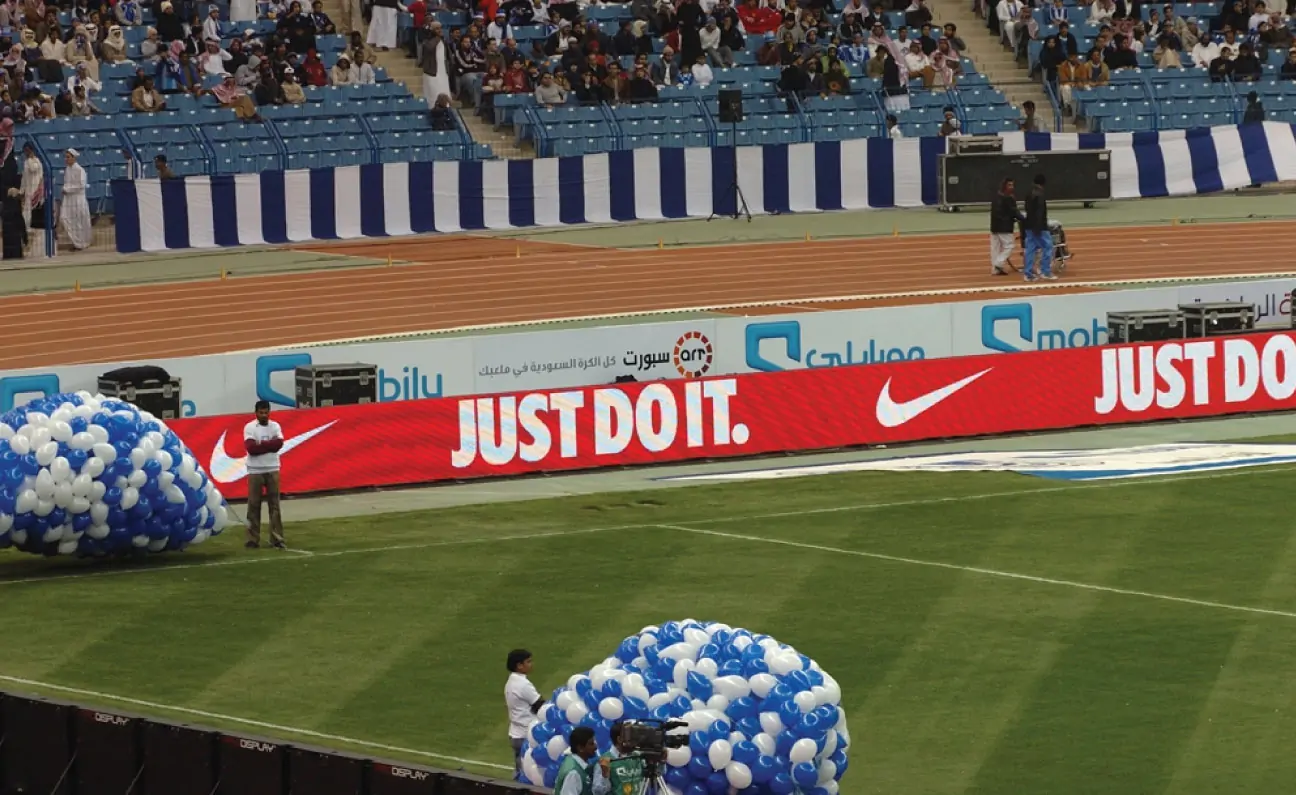
8. Trends and Challenges in the Perimeter LED Display Market
8.1 Future Trends of Sports LED Displays in the Market
Integration with Augmented Reality: The perimeter LED display will integrate AR technology to create an interactive experience for audiences in the stadium. AR technology can provide real-time information, player profiles, and other interactive elements.
AI Technology: In the future, event organizer can use AI tools to create novel and interesting advertising content based on audiences’ preferences and real-time data, greatly improving advertisement effectiveness and fan engagement.
Increasing Adoption of 4K and 8K Content: Perimeter displays with high resolution are increasingly popular, especially at sporting events or public gatherings. The growth of 4K and 8K content in stadiums and arenas is also contributing to this trend, as venues seek to provide ultra-high-definition experiences.
Cloud-Based and Remote Control: Cloud-based content management enables remote content monitoring, and scheduling on multiple screens. This trend allows venues to update and manage content without the need for on-site personnel, improving flexibility and reducing operating costs. Remote diagnostics also help to maintain the functionality of displays, minimizing downtime and maintaining costs.
8.2 Challenges of Stadium LED Displays in the Market
High Initial Investment:The upfront costs of installing LED perimeter displays may be prohibitively expensive. The cost includes the stadium screen itself, as well as the infrastructure such as mounting hardware, wiring and integration systems. The ongoing maintenance costs to keep the displays in top condition add to the financial burden.
Market Saturation and Competition: As the perimeter LED market grows, the competition between manufacturers increases, leading to increased price pressures and a need for constant innovation. Differentiating products, and maintaining a competitive edge become more difficult with the entry of new players on the market. This is especially true for smaller companies that have fewer resources available to invest in R&D.
Weather and Environmental Conditions: Outdoor perimeter LED displays can be affected by harsh weather conditions, such as rain, wind, and direct sunlight. It is important to ensure that the stadium screen is waterproof and UV resistant. However, this increases manufacturing and maintenance costs as well as complexity.
Complexity of Content Management and Integration: Managing content and scheduling it across multiple perimeter LED displays is complex, particularly when you integrate live videos and advertisements. The integration of other systems, such as scoreboards or sound systems in the venue can also be a technical challenge that requires expertise and coordination.
9. Reliable Stadium LED Display Supplier
Reliable suppliers are critical to ensuring your stadium LED displays meet performance and durability standards. Here’s what to consider when choosing a reliable supplier:
9.1 Industry Experience
Look for suppliers with a proven track record in stadium and arena installations. Established suppliers typically offer reliable services and are experienced in handling large-scale projects.
9.2 Product Quality and Specification
Reputable suppliers use trusted materials such as Nationstar LEDs, which are renowned for their brightness and durability. Checking the technical specifications will help to ensure that the product you receive will stand up to rigorous use.
9.3 After-Sales Support
Quality after-sales service is critical to maintaining screen performance. Look for a supplier that offers 24/7 technical support, regular maintenance and on-site assistance during the warranty period.
9.4 Customer Testimonials and Case Studies
Positive customer reviews and case studies of past stadium installations can provide insight into a supplier’s reliability and product quality. Reputable suppliers are often transparent about their project portfolios, showcasing previous stadium installations to demonstrate their expertise.
9.5 Customized Options
Every stadium has unique requirements and a good supplier can offer bespoke solutions, from screen shapes to customized brightness levels. Flexible customization options ensure you get the ideal sports LED display for your particular venue.
10. FAQs
11. Conclusion
This guide provides essential details for you to consider the prices, main parameters, benefits, and buying tips of stadium screens, making them a valuable resource that can help you maximize your investment and create a vibrant and engaging fan experience. Reading this post is a vital way to make an informed decision.

